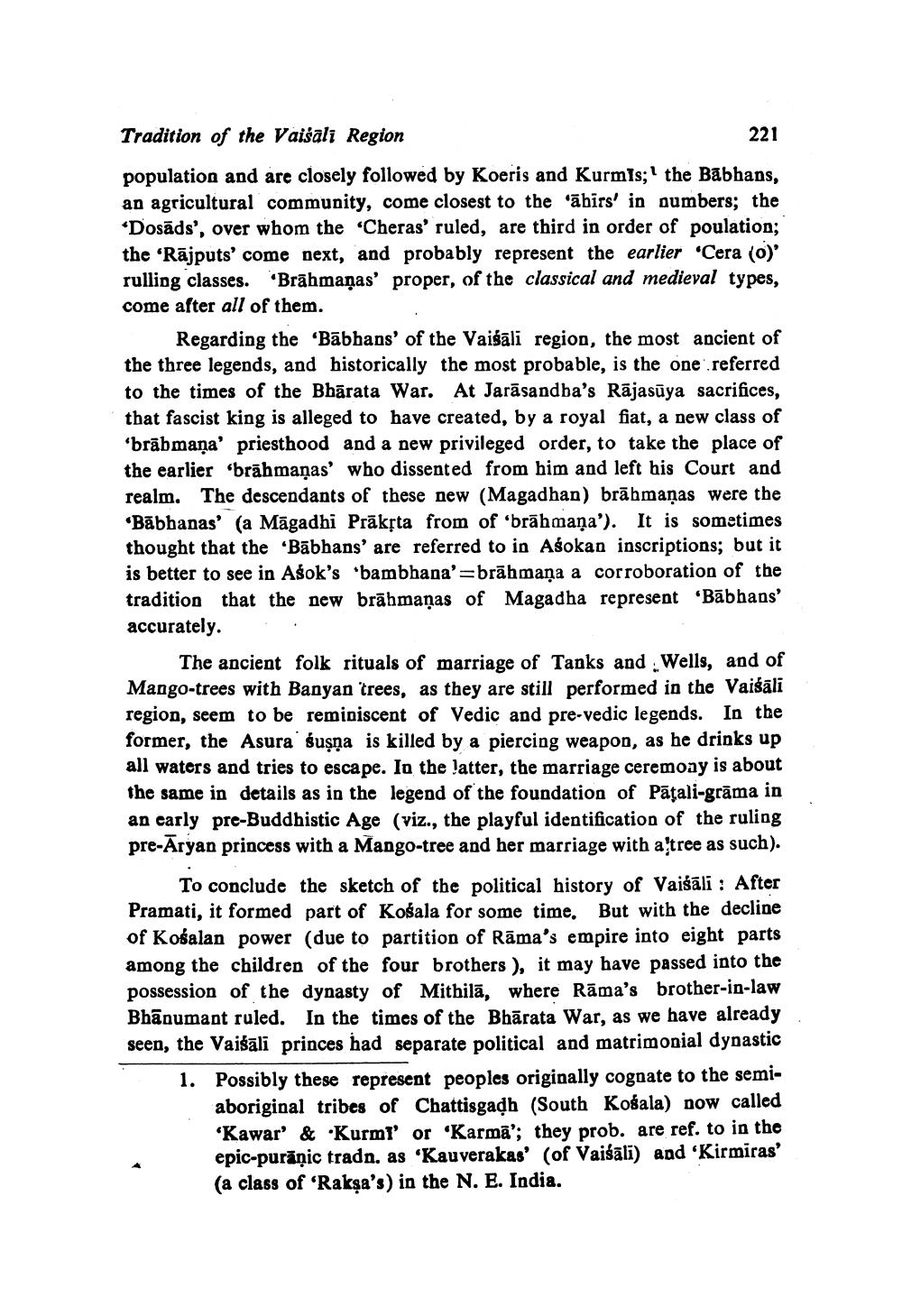________________ Tradition of the Vaisali Region 221 population and are closely followed by Koeris and Kurmis;' the Babhans, an agricultural community, come closest to the "abirs' in numbers; the *Dosads', over whom the 'Cheras' ruled, are third in order of poulation; the "Rajputs' come next, and probably represent the earlier "Cera (0)' rulling classes. "Brahmanas' proper, of the classical and medieval types, come after all of them. Regarding the 'Babbans' of the Vaisali region, the most ancient of the three legends, and historically the most probable, is the one referred to the times of the Bbarata War. At Jarasandba's Rajasuya sacrifices, that fascist king is alleged to have created, by a royal fiat, a new class of 'brabmana' priesthood and a new privileged order, to take the place of the earlier "brahmanas' who dissented from him and left his Court and realm. The descendants of these new (Magadhan) brabmanas were the Babbanas' (a Magadhi Praksta from of brahmana'). It is sometimes thought that the 'Babbans' are referred to in Asokan inscriptions; but it is better to see in Asok's 'bambhana'=brahmana a corroboration of the tradition that the new brahmanas of Magadha represent 'Babhans' accurately. . The ancient folk rituals of marriage of Tanks and Wells, and of Mango-trees with Banyan Trees, as they are still performed in the Vaisali former, the Asura susna is killed by a piercing weapon, as he drinks up all waters and tries to escape. In the latter, the marriage ceremoay is about the same in details as in the legend of the foundation of Pasali-grama in an early pre-Buddhistic Age (viz., the playful identification of the ruling pre-Aryan princess with a Mango-tree and her marriage with a tree as such). To conclude the sketch of the political history of Vaisali : After Pramati, it formed part of Kosala for some time. But with the decline of Kosalan power (due to partition of Rama's empire into eight parts among the children of the four brothers ), it may have passed into the possession of the dynasty of Mithila, where Rama's brother-in-law Bhanumant ruled. In the times of the Bharata War, as we have already seen, the Vaisali princes had separate political and matrimonial dynastic 1. Possibly these represent peoples originally cognate to the semi aboriginal tribes of Chattisgadh (South Kosala) now called *Kawar & Kurmt or Karma'; they prob. are ref. to in the epic-puranic tradn, as Kauverakas' (of Vaisali) and "Kirmiras' (a class of 'Raksa's) in the N. E. India.




